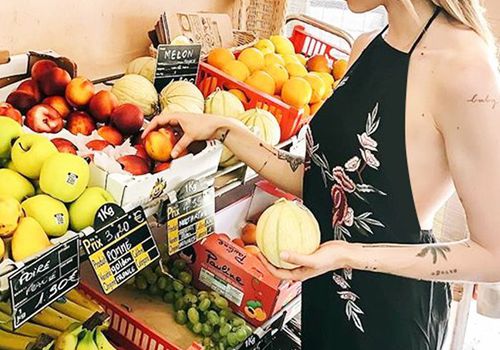Eating healthy does not mean a high grocery bill. It’s a misconception that having a healthy meal is not possible on a tight budget. In this article, you will learn how to get the maximum out of your budget. When it comes to saving money, there are some compromises to be made, the same goes here too. Thought it would be really nice to be able to eat eggs, organic food and meats but we need to keep it much simpler with whole food to maintain the tight budget. Below are the 7 tips that will guide you on how to eat healthy even on a tight budget:

1. Set up a monthly or weekly budget to be used on food
This is quite some work initially. Keeping a note of all your expenses weekly or monthly, this will enable you to set aside a budget that should not fall short and remain consistent to be used to shop grocery.
2. Setting up of meal plan check inventory at home
This is basically a grocery list that you already have. Check your kitchen thoroughly and you might find quite a few kinds of stuff that can be consumed and used in the preparation of some dish. The most common items that are usually ignored and are left hanging around are flours, soup packs, baked beans can and more. Once you have the list of what you already have, a search in Google will list out all possible healthy recipes. Check what ingredients you already have and make a list for the missing ingredients that need to be purchased.
3. Weekly sales – Keep a track of these at the local grocery store
Always keep a track of weekly sales at the local grocery store. Generally, flyers are sent out by the store. For online shoppers, the sales are also listed on their websites. Using coupons is also a very good way to save some money. In fact, you can use the money saved with coupons for many other important purposes.
4. Bulk purchases
Bulk price is always low. Staples like rice and oats should be purchased in the lot; this will save more in the long-run as it’s very common to get more discounts when anything is bought in bulk quantity. Look for a bulk seller in your location or online to save money avoiding packaging and delivery cost.
5. Whole food is better than processed foods
Nutritional value of whole food is always more than that of processed. As a matter of fact, whole food is less expensive as compared to packaged processed food that also adds up the cost of fancy packaging. Why pay $6 for some unhealthy bars that are nothing but sugar when you can get many healthy fruits like apples or oranges for the same price.
Some whole foods that can fit well in any budget are rice, potatoes, beans, fresh spinach, berries, oats, dried lentils and bananas.
6. Sale on Rack for discounted products
You must have noticed that every grocery store has a section where there are special racks with discounted products. These products are not fresh and at the verge of getting stale. The prices are reduced for these so that it’s sold before it no longer edible. If you see that the vegetables or fruits still looks fine and can be consumed, then you can pick these. If you are looking for deals on meats, then try to find out when the store gets the fresh stock of meat delivered. You will notice that a day before the meat section will be on discount and you can take advantage of the low price.
7. Buy seasonal fruits and veggies
Fruit and vegetables that are available throughout the year are always more expensive than the seasonal ones. The cheapest fruits available are the one that is produced locally and sold at the nearest farmer’s market. Fruits and vegetables are needed for energy and good nutritional values as they are full of minerals, vitamins and antioxidants. Seasonal fruits can be bought and kept in the freezer to last for a couple of weeks. To summarize, it is not very difficult to eat healthy even if the budget is tight. All it takes is planning in advance with smart shopping and it is what will make it a success.